This article was co-authored by Trudi Griffin, LPC, MS. Trudi Griffin is a Licensed Professional Counselor in Wisconsin specializing in Addictions and Mental Health. She provides therapy to people who struggle with addictions, mental health, and trauma in community health settings and private practice. She received her MS in Clinical Mental Health Counseling from Marquette University in 2011.
There are 27 references cited in this article, which can be found at the bottom of the page.
This article has been viewed 615,146 times.
Depression is a clinical condition just as real as a cold or flu. The key to understanding whether someone has depression or a bad case of the blues is knowing the severity and frequency of the feelings or symptoms. Treatment for depression varies widely from person to person, but there are some approaches that seem to work more often than others. With the right treatments, you may be able to minimize the symptoms of depression and reduce the impact of depression on the quality of your life.
Steps
Diagnosing Depression
-
1Keep track of how you feel every day for 2 weeks. If you have a depressed mood, such as feelings of sadness, and you have lost interest or pleasure in things that were previously pleasurable, you may be depressed. These symptoms should be present most of the day and nearly every day for at least 2 weeks.
- These symptoms may last for 2 weeks or more and they may stop and come back again. These are called “recurrent episodes.” In this case, the symptoms are more than just a “bad day.” They are severe changes in mood that affect the way someone functions socially or at their job. You may have stopped going to school or showing up for work. Similarly, these feelings might make you lose interest in some of your favorite hobbies or activities, like playing sports, doing crafts, or visiting with friends.
- If you have undergone a major life event, such as a death in the family, you can exhibit many depressive symptoms and not be clinically depressed. Consult with your doctor or therapist to determine if you are experiencing more depressive symptoms than is typical in the normal grieving process.[1]
-
2Pay attention to other symptoms of depression. In addition to feeling sad and losing interest in things, a depressed person will also show other symptoms most of the day, nearly every day, for at least 2 weeks. Looking at your list of feelings for the past 2 weeks, check if you have 3 or more additional typical symptoms. These symptoms can include:
- Significant loss of appetite or loss of weight
- Disrupted sleep (either unable to sleep or sleeping too much)
- Fatigue or loss of energy
- Increased agitation or decreased movement noticeable by others
- Feelings of worthlessness or excessive guilt
- Having difficulty concentrating or feeling indecisive
- Recurrent thoughts of death or suicide, attempting suicide or having a plan for suicide
Advertisement -
3Get help immediately if there are thoughts of suicide. If you or someone you know is having thoughts of suicide, please seek help immediately by calling 911 or going to the nearest emergency room. You should not try to get rid of these thoughts without the help of a professional.
-
4Distinguish between depression and "the blues." The blues are a valid set of feelings that can be brought on by stress, major life changes (both positive and negative), and even weather. The key to distinguishing between depression and the blues is knowing the severity and frequency of the feelings or symptoms. If you have had symptoms of depression nearly every day for 2 weeks or longer, you may be depressed.[2]
- A major life event, such as the death of a loved one, can bring on symptoms similar to depression. A noticeable difference may be, during the mourning process, that positive memories of the deceased are possible and one may still gain pleasure from certain activities. Depressed people have a harder time doing normal activities with a sense of pleasure.[3]
-
5Write down the activities you've done in the last few weeks. Make a list of every activity, from going to work or attending classes to eating and taking a shower. Observe if there are patterns in your activities. Also notice if there is a decrease in frequency of certain types of activities that you normally do willingly or happily.
- Use this list to observe if you are engaging in risky behaviors. People who are depressed may do risky things because they no longer care about the outcome of their lives, and may need help from others to take care of themselves.[4]
- If you are depressed, this may be a difficult task to complete. Take your time with it, or ask a trusted family member or friend to help you write a list.
-
6Ask if others have noticed a difference in your mood. Talk with a trusted family member or friend to see if they’ve noticed differences in the way you act. While a person’s own experience is most important, the opinions of other people who know the person well are also important.
- Others may notice that you are prone to unprovoked bouts of crying or the inability to complete simple tasks like taking a shower.[5]
-
7Ask your doctor if your physical condition contributes to depression. Some illnesses cause depressive symptoms, especially those related to the thyroid or other parts of the body’s hormone system.[6] Talk with your doctor to find out if a physical medical condition might be contributing to depression.
- Certain medical conditions, especially terminal or chronic conditions, may carry a risk for depressive symptoms. In these cases, an objective medical professional is essentially for helping to understand the source of the symptoms and how to alleviate them.[7]
Seeking Professional Help
-
1Choose a mental health professional. There are different types of therapists, each of whom offers different skills or specialties. These include counseling psychologists, clinical psychologists and psychiatrists. You can see one or a combination of different ones.
- Counseling psychologists: Counseling psychology is a field of therapy that focuses on helping skills and helping people overcome difficult times in their lives. This type of therapy can be short or long-term and is often problem-specific and goal-directed.
- Licensed professional counselor or licensed social worker: These types of mental health providers are often much easier to find and schedule counseling sessions with than psychologists. Ask your doctor for a referral or find one in your area by searching online.
- Clinical psychologists: These are trained to administer tests to confirm a diagnosis and therefore, they tend to focus more on psychopathology, or the study of behavioral or mental disorders.
- Psychiatrists: These may use psychotherapy and scales or tests in their practice, but are typically consulted when medication is an option the patient wants to explore. In most states, only psychiatrists can prescribe medication, although some states now allow psychologists to prescribe medication.[8]
-
2Get a referral. For help finding a counselor, consider recommendations from friends or family, leaders in your religious community, community mental health center, your Employee Assistance Program (if your employer offers one), or your doctor.[9]
- Other professional associations like the American Psychological Association may provide search functions for locating their members in your area.[10]
-
3Shop around for a therapist. Find someone who makes you feel welcome and at ease. A bad counseling experience can put you off the whole idea for years, which could deprive you of valuable therapy. Remember that not all mental health professionals are alike; find one you like and stick with them.
- Therapists will generally prompt you to speak with careful questions, and then listen to what you have to say. It can be nerve-wracking at first to open up to your counselor, but most people find it hard to stop talking after a few minutes have passed.
-
4Make sure your therapist is licensed. Mental health professionals must be licensed to practice in your state. The website of the Association of State and Provincial Psychology Boards[11] provides some basic information about how to choose a therapist, what the licensing requirements are in your state, and how to check whether someone is licensed.
-
5Check with your health insurance. Although mental illnesses are legally required to be covered to the same extent as a so-called physical illness, the type of insurance you have can still affect the kind and amount of therapy you receive. Be sure to check with your insurance company so that you get any referrals needed before starting treatment. This will also ensure that you are seeing someone who will be covered by your insurance.
-
6Ask your therapist about different types of therapy. Three main therapies have most consistently shown benefit to patients. These are cognitive behavioral therapy, interpersonal therapy and behavioral psychotherapy.[12] There are numerous other approaches as well. Your therapist will be able to determine the best course of action for you.
- Cognitive behavioral therapy (CBT): The goal of CBT is to challenge and change beliefs, attitudes, and preconceptions that are thought to underlie depressive symptoms and to effect change to maladaptive behaviors.
- Interpersonal therapy (IPT): IPT focuses on life changes, social isolation, deficits in social skills, and other interpersonal issues that may contribute to depressive symptoms. IPT may be particularly effective if a specific event (such as a death) has triggered a recent depressive episode.
- Behavioral psychotherapy: Behavioral therapies aim to schedule enjoyable activities while minimizing unpleasant experiences through techniques such as activity scheduling, self-control therapy, social skills training, and problem solving.
-
7Be patient. The effects of counseling are gradual. Expect to attend regular sessions for at least a few months before noticing any permanent effect. Don't give up hope before you've given it time to work.
Talking to your Psychiatrist about Medication
-
1Ask a psychiatrist about antidepressants. Antidepressants affect the neurotransmitter system of the brain to try to counteract problems in how neurotransmitters are made and/or used by the brain. Antidepressants are categorized based on the neurotransmitters they affect.[13]
- The most common types are SSRIs, SNRIs, MAOIs, and tricyclics. Names of some of the most widely used antidepressants can be found by searching for antidepressants online.[14] A psychiatrist will also know the best choices for medications for your particular case.
- Your psychiatrist may have you try a few different medications until one seems to work. Some antidepressants backfire on some people, so it's very important to stay in close contact with your practitioner and note any negative or unwelcome change in mood immediately. Usually, switching to a different class of drug will fix the problem.
-
2Ask a psychiatrist about antipsychotics. If an antidepressant alone isn’t working, your therapist might recommend an antipsychotic. There are 3 antipsychotics (aripiprazole, quetiapine, risperidone). There is also an antidepressant/antipsychotic combination therapy (fluoxetine/olanzapine), which is approved for use along with a standard antidepressant. These can treat depression when an antidepressant alone is not working.[15]
-
3Pair medication with psychotherapy. To maximize how medication works, continue to visit a mental health professional on a regular basis while taking the medication.[16]
-
4Take your medication regularly. Antidepressants take time to work, because they slowly and gently modify the brain's chemical balance. Generally speaking, it will take at least three months to see any lasting effect from an antidepressant.
Writing in a Journal
-
1Write down patterns in your moods. Use a journal to keep track of patterns that may affect your mood, energy, health, and sleep. Journaling can also help you process your emotions and gain insight into why certain things make you feel the way you do.[17]
- There are people who teach journaling, books about journaling, and even websites to keep online journals if you require more structure.
-
2Try to write every day. Try to get into the habit of writing every day, even if it’s just for a few minutes. Some days you may feel like writing more, while on other days you may have less energy or inspiration. Writing does get easier as you write more frequently, so stick with it to see how it can help.[18]
-
3Keep a pen and paper with you at all times. Make it easy to write at a moment’s notice by carrying a journal or notepad and pen with you all the time. Alternately, consider using a simple note-taking application on a phone, tablet computer or other device that you often have with you.
-
4Write whatever you want. Just let the words flow and don’t worry if they don’t make much sense. Don’t worry about spelling, grammar, or style; and don’t worry about what other people might think.
-
5Share only if you want to share. You can keep your journal private if you want to. You can also share some things with family, friends or a therapist if you think it might be helpful. You can also start a public tell-all blog. It is up to you and your comfort level how you use your journal.
Changing your Diet
-
1Eliminate foods that contribute to depression. Processed foods like processed meats, chocolates, sweet desserts, fried foods, processed cereals, and high-fat dairy are known to relate to more symptoms of depression.[19]
-
2Eat more foods that can reduce depression. Foods that relate to fewer symptoms of depression include fruits, vegetables, and fish.[20] Increasing your intake of these foods will give your body more nutrients and vitamins that can make your body healthier.
-
3Try the Mediterranean Diet. The Mediterranean Diet, referring to the region of the world where the diet is most typical, emphasizes eating fruits, vegetables, fish, nuts, legumes and olive oil.[21]
- This diet also avoids alcohol, which is a depressant itself.
-
4Increase your intake of omega-3 fatty acids and folate. While there is no evidence that increasing intake of omega-3 fatty acids or folate alone is enough to treat depression[22] , omega-3 fatty acids and folate may have some effects in treating depression when they are used along with another type of therapy.
-
5Monitor how your diet affects your mood. Watch your mood a couple of hours after you eat particular foods. If you notice a particularly good or bad mood, think about what food you recently ate. Do you notice a pattern with certain types of foods?
- You don’t need to keep detailed notes of every nutrient you take in, but it is important to pay attention to what you eat and how it makes you feel to avoid falling back into depression.
Focusing on Fitness
-
1Check with a medical doctor or personal trainer. Before embarking on a new exercise routine, it is important to figure out what exercises are best for you given your interests, size/strength, and history of injuries (if any). Consult a medical doctor or personal trainer to evaluate your fitness level.
- This person can also help you determine what exercises could be safe and fun for you, and which can help provide motivation for getting started.
-
2Start an exercise regimen. Exercise helps to elevate mood and prevent relapse. In randomized control trials, exercise has been shown to be nearly as effective as medication. Experts think that exercise increases the body’s release of neurotransmitters and hormones and also helps to regulate sleep.[23]
- A positive part of exercise as a treatment for depression is that activities like running do not cost a lot of money.
-
3Use the SMART system to set goals. Set goals according to SMART, which stands for Specific, Measurable, Attainable, Realistic, and Timely. These guidelines will help you experience the reward and reinforcement associated with reaching exercise goals.
- Start with the “A” in SMART in setting your goals. Set an easy goal at first, since attaining it gives you the experience of success early. It will also give you confidence to set your next goal. If you don’t think you can push yourself to do more (such as walking for 10 minutes), then push yourself to do more often (such as walking for 10 minutes every day for a week, then a month, then the whole year). See how long you can keep your streak going.
-
4Treat every exercise session as a step forward. Consider every time you exercise as a treatment for your mood and a positive reflection of your will to improve.[24] Even just walking for five minutes at a medium pace is better than no exercise. By taking pride in every accomplishment, no matter how small, you can still feel like you're moving forward and healing yourself.
-
5Try cardiovascular exercise. This type of exercise, such as swimming, running or cycling, is an ideal core exercise for treating depression. Choose cardio exercise that's easy on your joints, such as swimming laps or cycling, if you possibly can.
-
6Exercise with a friend. Talk to a friend or family member about exercising with you. They may be able to help motivate you to getting outside or going to the gym to exercise. Explain that it won't be easy to motivate you, but that any help they can give will be sincerely appreciated.
Trying Other Strategies
-
1Increase your exposure to sunlight. Some research suggests increased amounts of sunlight can have a positive effect on mood. This is due to the effects of Vitamin D, which can come from many different sources (not just sunshine).[25] You don’t need to do anything specific when you’re outside; just sitting on a bench and getting some sun can be helpful.
- Some counselors prescribe sunlight lamps for depression patients who live in areas with low winter sunlight: it produces the same effect as going outside and standing under bright sunlight.
- If you're going to be out in the sun for more than a few minutes, take sensible precautions by applying sunscreen to your bare skin and wearing sunglasses.
-
2Get outdoors. Gardening, walking, and doing other activities outdoors can have beneficial effects. While some of these activities are also related to exercise, they do not necessarily need to be exercise-focused.[26] Having exposure to fresh air and nature can be helpful in calming your mind and relaxing your body.EXPERT TIPChloe Carmichael, PhD is a Licensed Clinical Psychologist who runs a private practice in New York City. With over a decade of psychological consulting experience, Dr. Chloe specializes in relationship issues, stress management, self esteem, and career coaching. She has also instructed undergraduate courses at Long Island University and has served as adjunct faculty at the City University of New York. Dr. Chloe completed her PhD in Clinical Psychology at Long Island University in Brooklyn, New York and her clinical training at Lenox Hill Hospital and Kings County Hospital. She is accredited by the American Psychological Association and is the author of “Nervous Energy: Harness the Power of Your Anxiety” and “Dr. Chloe's 10 Commandments of Dating.”Licensed Clinical Psychologist

 Chloe Carmichael, PhD
Chloe Carmichael, PhD
Licensed Clinical PsychologistTry volunteering to help others. When we start helping other people, we start noticing that other people might even have bigger problems than we do, but that they seem to be managing. This can give you hope.
-
3Find a creative outlet. There has long been speculation that creativity and depression are linked because some think that it may be the “cost” of being a creative person. Depression, however, may arise more frequently when a creative person has trouble finding an expressive outlet. Find a creative outlet by writing, painting, dancing or doing some other creative activity on a regular basis.[27]
Trying Alternative Remedies
-
1Try St. John’s Wort. St. John’s Wort is the alternative medicine that has some effectiveness in milder forms of depression.[28] It has not, however, shown to be much more effective than a placebo in large-scale studies. This medicine can be purchased at natural health food stores.
- Be sure to follow directions on the package for proper dosage and frequency.
- Be sure to buy herbal supplements from a reputable seller. Supplements are only very loosely monitored by the FDA, and as such, levels of purity and quality vary from manufacturer to manufacturer.
- Do not take St. John's Wort with medications such as SSRIs. This can cause your body to have too much serotonin, which can be life threatening.
- St. John's Wort can make other drugs less effective when taken at the same time. Drugs it can affect include oral contraceptives, antiretroviral medications (e.g., drugs to treat HIV), anticoagulants (e.g., Warfarin), hormone replacement therapies, and immunosuppressant medications. Work with your doctor if you are on other medications.
- Because of the lack of evidence supporting the effectiveness of St. John’s Wort, the American Psychiatric Association does not recommend it for general use.
- The National Center for Alternative and Complementary Medicine recommends caution in using homeopathic remedies and encourages open discussions with healthcare providers so that treatment can be coordinated and safe.[29]
-
2Try a SAMe supplement. Another alternative supplement is S-adenosyl methionine (SAMe).[30] SAMe is a naturally occurring molecule, and having low levels of SAMe have been linked to depression. SAMe can be taken orally, intravenously (an injection into a vein), or intramuscularly (an injection into the muscle) to boost your SAMe levels.
- The preparation of SAMe is not regulated and the potency and ingredients can vary among manufacturers.
- Be sure to follow directions on the package for proper dosage and frequency.
-
3Seek acupuncture treatment. Acupuncture is a part of traditional Chinese medicine that uses needles inserted at specific parts of the body to correct energy blocks or imbalances in the organ.[31] Locate an acupuncture practitioner by searching online or asking your doctor for a referral.
- Check with your health insurance provider to find out if acupuncture is covered by your insurance.
- Evidence for the effectiveness of acupuncture is mixed.[32] One study has shown a link between acupuncture and normalization of a neuroprotective protein with an effect similar to Prozac.[33] Another study has shown effectiveness comparable to psychotherapy.[34] These studies lend some credibility to acupuncture as a treatment for depression, although more research is needed.[35]
Trying Medical Device Treatments
-
1Have your therapist prescribe electroconvulsive therapy. Electroconvulsive therapy (ECT) may be prescribed in very severe cases of depression, people who are acutely suicidal, people experiencing psychosis or catatonia in addition to depression, or people who have not responded to other treatment.[36] The treatment begins with a mild anesthetic, followed by several shocks delivered to the brain.
- ECT has the highest response rate of any antidepressant therapy (70%-90% of patients respond).[37]
- Some limitations of ECT use include the stigma associated with it, as well as potential side effects, including cardiovascular effects and cognitive effects (such as short-term memory loss).
-
2Try transcranial magnetic stimulation. Transcranial magnetic stimulation (TMS) uses a magnetic coil to stimulate the brain. It is approved by the FDA for use in people with major depressive disorders who do not respond to medication.[38] , [39]
- Treatment is required daily, which makes is difficult for the average person to undergo.
-
3
-
4Try deep-brain stimulation. Deep-brain stimulation (DBS) is an experimental treatment and has not been approved by the FDA. It requires the implantation of a medical device that is used to stimulate a part of the brain called “Area 25.”[44]
- There is limited information on the effectiveness of DBS.[45] As an experimental treatment, DBS would only be used if other treatments failed or were not an option.
-
5Try neurofeedback. Neurofeedback aims to “re-train” the brain when a person with depression shows a particular pattern of brain activity. Newer forms of neurofeedback are being developed using functional magnetic resonance imaging (fMRI) techniques.
- Neurofeedback can be costly and requires a lot of time. Insurance companies may not pay for this procedure.
Additional Resources
| Organization | Phone Number |
|---|---|
| TeenLine |
(800) 852-8336 |
| Veteran Crisis Line |
(800) 273-8255 (Press 1) |
| Postpartum Support International |
(800) 944-4773 |
| The Trevor Project (LGBTQ) |
(866) 488-7386 |
| Depression and Bipolar Support Alliance |
(800) 826-3632 |
| 988 Suicide and Crisis Lifeline |
988 |
Warnings
- If you or someone you know is having thoughts of suicide, please seek help immediately by calling 911 or going to the nearest emergency room. You should not try to get rid of these thoughts without the help of a professional.⧼thumbs_response⧽
References
- ↑ American Psychiatric Association. The Diagnostic and Statistical Manual, 5th Edition (DSM-5).
- ↑ Solomon, Andrew. The Noonday Demon.
- ↑ American Psychiatric Association. The Diagnostic and Statistical Manual, 5th Edition (DSM-5).
- ↑ http://andrewsolomon.com/books/the-noonday-demon/
- ↑ Solomon, Andrew. The Noonday Demon
- ↑ American Psychiatric Association. The Diagnostic and Statistical Manual, 5th Edition (DSM-5).
- ↑ https://www.psychiatry.org/dsm5
- ↑ http://www.apa.org/news/press/releases/2014/06/prescribe-medications.aspx
- ↑ http://www.apa.org/helpcenter/choose-therapist.aspx
- ↑ http://locator.apa.org/
- ↑ http://www.asppb.net/?page=geninfopublic
- ↑ http://psychiatryonline.org/pb/assets/raw/sitewide/practice_guidelines/guidelines/mdd.pdf
- ↑ http://www.mayoclinic.org/diseases-conditions/depression/in-depth/antidepressants/art-20046273
- ↑ http://abcnews.go.com/Health/MindMoodNews/story?id=6761204&page=1
- ↑ http://www.plosmedicine.org/article/info%3Adoi%2F10.1371%2Fjournal.pmed.1001403
- ↑ http://psychiatryonline.org/pb/assets/raw/sitewide/practice_guidelines/guidelines/mdd.pdf
- ↑ http://www.urmc.rochester.edu/encyclopedia/content.aspx?ContentTypeID=1&ContentID=4552
- ↑ http://www.urmc.rochester.edu/encyclopedia/content.aspx?ContentTypeID=1&ContentID=4552
- ↑ http://bjp.rcpsych.org/content/195/5/408.long
- ↑ http://bjp.rcpsych.org/content/195/5/408.long
- ↑ http://dadun.unav.edu/bitstream/10171/4928/1/SUN%2028.pdf
- ↑ http://psychiatryonline.org/pb/assets/raw/sitewide/practice_guidelines/guidelines/mdd.pdf
- ↑ http://www.apa.org/monitor/2011/12/exercise.aspx
- ↑ https://www.unm.edu/~lkravitz/Article%20folder/ExerciseMot.pdf
- ↑ http://www.ncbi.nlm.nih.gov/pmc/articles/PMC2908269/
- ↑ http://www.nydailynews.com/life-style/health/nature-good-medicine-stress-depression-report-article-1.1496476
- ↑ http://psychcentral.com/library/depression_creativity.htm
- ↑ http://psychiatryonline.org/pb/assets/raw/sitewide/practice_guidelines/guidelines/mdd.pdf
- ↑ http://www.nimh.nih.gov/health/topics/brain-stimulation-therapies/brain-stimulation-therapies.shtml
- ↑ http://psychiatryonline.org/pb/assets/raw/sitewide/practice_guidelines/guidelines/mdd.pdf
- ↑ http://www.scientificamerican.com/article/can-acupuncture-treat-depression/
- ↑ http://psychiatryonline.org/pb/assets/raw/sitewide/practice_guidelines/guidelines/mdd.pdf
- ↑ http://www.scientificamerican.com/article/can-acupuncture-treat-depression/
- ↑ http://www.reuters.com/article/2013/09/24/us-acupuncture-depression-idUSBRE98N17420130924
- ↑ http://psychiatryonline.org/pb/assets/raw/sitewide/practice_guidelines/guidelines/mdd.pdf
- ↑ http://www.mayoclinic.org/tests-procedures/electroconvulsive-therapy/basics/definition/prc-20014161
- ↑ http://psychiatryonline.org/pb/assets/raw/sitewide/practice_guidelines/guidelines/mdd.pdf
- ↑ http://psychiatryonline.org/pb/assets/raw/sitewide/practice_guidelines/guidelines/mdd.pdf
- ↑ http://www.nimh.nih.gov/health/topics/brain-stimulation-therapies/brain-stimulation-therapies.shtml
- ↑ http://psychiatryonline.org/pb/assets/raw/sitewide/practice_guidelines/guidelines/mdd.pdf
- ↑ http://www.nimh.nih.gov/health/topics/brain-stimulation-therapies/brain-stimulation-therapies.shtml
- ↑ http://psychiatryonline.org/pb/assets/raw/sitewide/practice_guidelines/guidelines/mdd.pdf
- ↑ http://www.nimh.nih.gov/health/topics/brain-stimulation-therapies/brain-stimulation-therapies.shtml
- ↑ http://www.nimh.nih.gov/health/topics/brain-stimulation-therapies/brain-stimulation-therapies.shtml
- ↑ http://www.nimh.nih.gov/health/topics/brain-stimulation-therapies/brain-stimulation-therapies.shtml
About This Article
Depression can make you feel helpless, but with help from a therapist, you can find treatments and coping strategies that work for you. When you’re looking for a therapist, take some time to shop around for someone who makes you feel welcome and comfortable. There are many different types of therapy that are used to treat depression, like cognitive behavioral therapy, interpersonal therapy, and behavioral psychotherapy. You and your therapist should work together to find a method that helps you the most. While you continue to see your therapist, you can also talk to a psychiatrist about trying antidepressant medication. Throughout your treatment, remember that it will probably be at least a few months before you notice any permanent effects, so be patient and keep going to your therapy sessions regularly. To learn more from our Mental Health co-author about strategies for dealing with depression, like how changing your diet can boost your mood, keep reading!
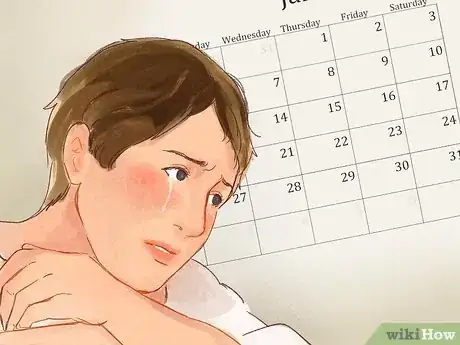


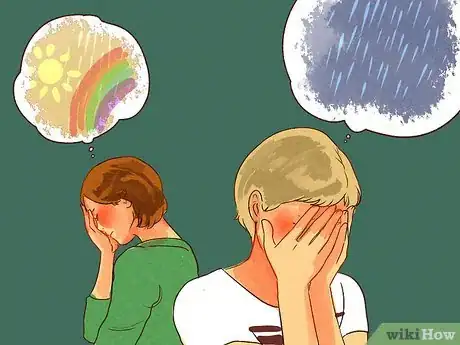


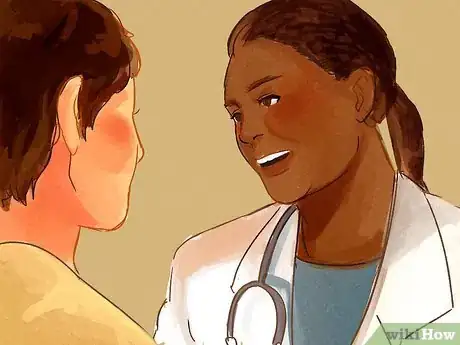


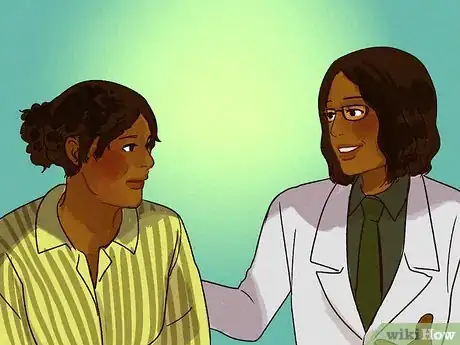
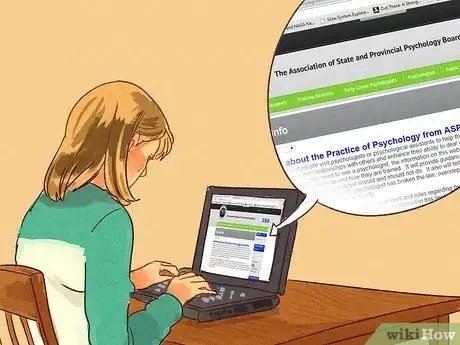
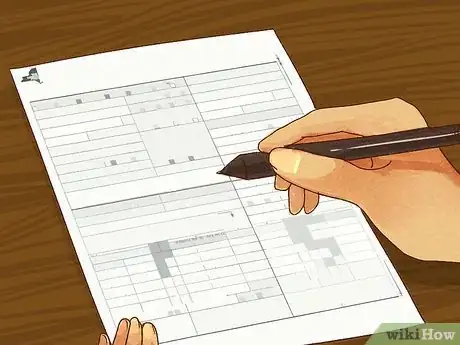
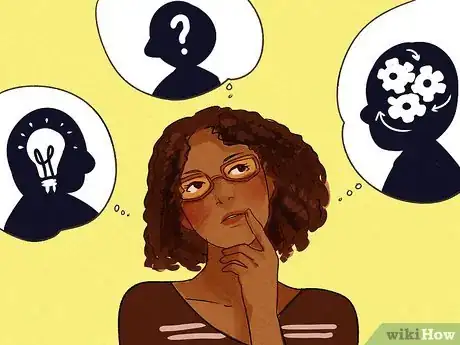






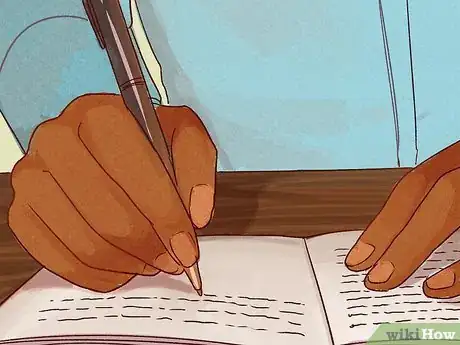
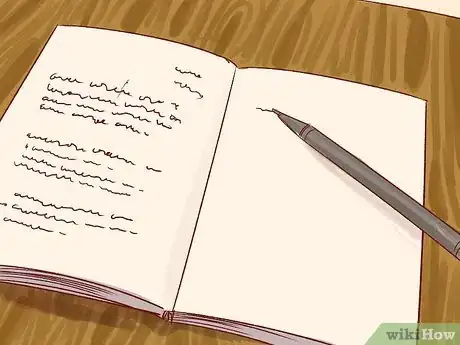





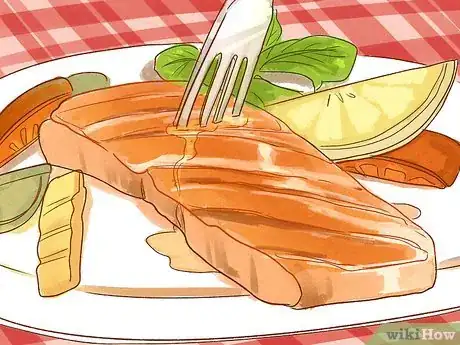
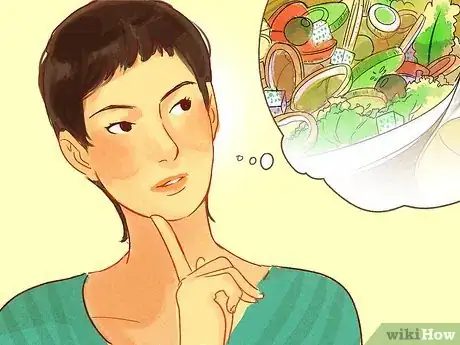





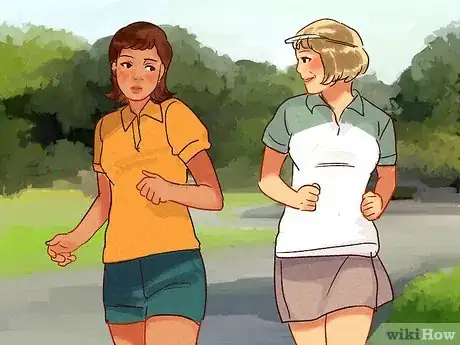









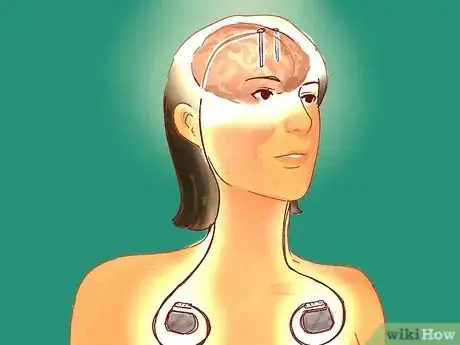
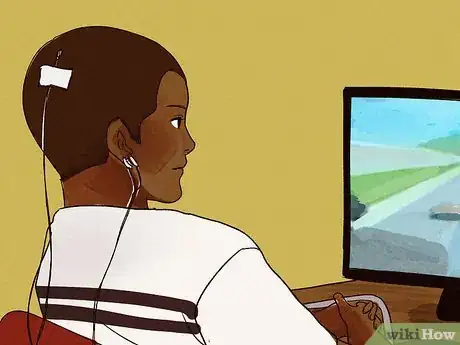
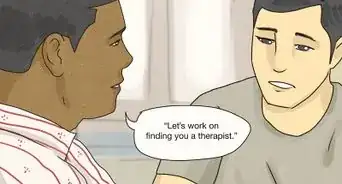

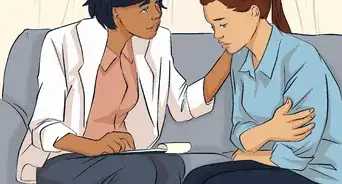
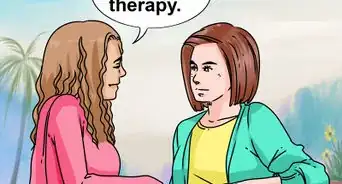
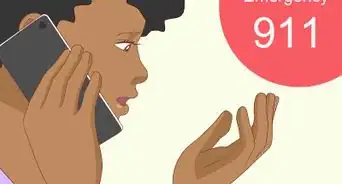
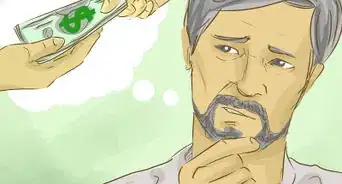


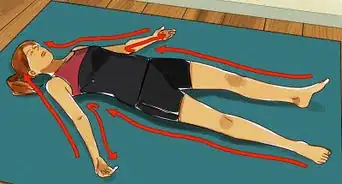

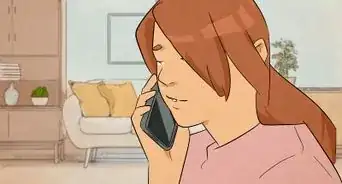

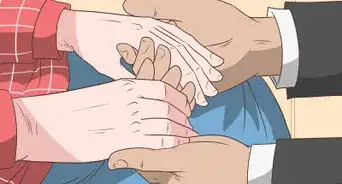












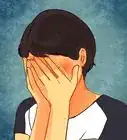
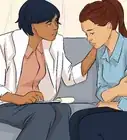
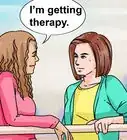



































Medical Disclaimer
The content of this article is not intended to be a substitute for professional medical advice, examination, diagnosis, or treatment. You should always contact your doctor or other qualified healthcare professional before starting, changing, or stopping any kind of health treatment.
Read More...